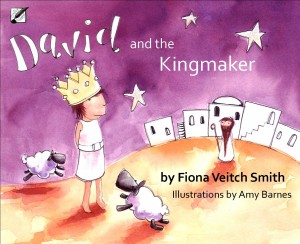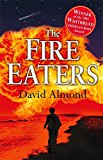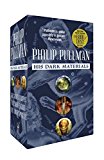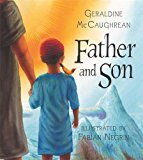 Well it’s that time of year again and we are all desperately trying to buy just the right present for our loved-ones. Books are always a popular gift and while we still have them in physical form, we should enjoy them. As writers (which the majority of readers of the Crafty Writer are) we all need to pull together to keep the industry afloat. Now don’t get me wrong, I’m not anti e-book (in fact I’ve recently released my own novel,The Peace Garden on e-book) but I do still love holding a ‘real’ book in my hand. And so do most young children. A few years ago I wrote a guide on how to choose a good children’s book. I think it’s worth repeating here, but before I do, may I just recommend two of my own children’s books that have been recently published? David and the Hairy Beast and David and the Kingmaker are beautifully illustrated tales which address issues commonly faced by young children, such as their sense of identity and self-worth, facing fears and making friends.
Well it’s that time of year again and we are all desperately trying to buy just the right present for our loved-ones. Books are always a popular gift and while we still have them in physical form, we should enjoy them. As writers (which the majority of readers of the Crafty Writer are) we all need to pull together to keep the industry afloat. Now don’t get me wrong, I’m not anti e-book (in fact I’ve recently released my own novel,The Peace Garden on e-book) but I do still love holding a ‘real’ book in my hand. And so do most young children. A few years ago I wrote a guide on how to choose a good children’s book. I think it’s worth repeating here, but before I do, may I just recommend two of my own children’s books that have been recently published? David and the Hairy Beast and David and the Kingmaker are beautifully illustrated tales which address issues commonly faced by young children, such as their sense of identity and self-worth, facing fears and making friends.
And now, here are those tips for choosing a good children’s book (apart from mine!):
Beware of marketing
The best books for children are not always found on the big flashy displays. Not to say that everything on the front-of-shop racks are poorly written, but don’t just grab the first thing you see in your lunch hour. These books are usually character driven spin-offs from television shows or toy product lines. They’ve got a massive advertising budget behind them and trade on ‘product recognition’. This does not necessarily mean they are well-written books. I was shocked to read some Thomas the Tank Engine Books the other day. They were quite simply film stills with captions, taken directly from the TV show. The original Thomas books by the Rev WV Awdry were wonderfully conceived and written, but since the TV franchise took over in 2002 (note they are now Thomas and Friends) the quality has gone downhill like a runaway train! So take some time and delve a bit deeper into your local bookshop.
Assuming you’ve got past the glitzy displays and into the dustier depths of the shop, what do you look for?
A good story
Quite simply, is it fun to read? Is the plot well constructed with a good beginning, middle and end? Are the characters engaging and realistic? Does the plot line deal with emotional issues without being too soppy? Does it dare to be daring? The other day I was delighted to read Pigs by Robert Munsch (illustrations Michael Martchenko). This is the story of a little American girl who opens a pig pen and lets the swine loose on the town. While I feel the book is a bit wordy and could do with a better balance between words and pictures (and less repetition), the story itself is brilliant! It’s funny, engaging and slightly ‘naughty’ – which children love. For older children, books that are often snubbed by the literary critics, are the Artemis Fowl series by Eoin Colfer. They’re subtitled ‘Die Hard With Fairies’ and the first in the series is simply one of the best reads I’ve had in years.
Quality writing
 It’s amazing how poor the writing in children’s books can be. Just because children are not that good at reading yet, does not mean publishers can get away with producing shoddy material. Read a book before you buy it – or at least sample some good chunks of it. Good literature doesn’t have to be boring. Anything by David Almond is guaranteed to entertain and challenge on an intellectual level. His first children’s book is Skellig about an angel in a garden shed, but my favourite is The Fire Eaters about a little boy in the 1960s who befriends a carnival freak.
It’s amazing how poor the writing in children’s books can be. Just because children are not that good at reading yet, does not mean publishers can get away with producing shoddy material. Read a book before you buy it – or at least sample some good chunks of it. Good literature doesn’t have to be boring. Anything by David Almond is guaranteed to entertain and challenge on an intellectual level. His first children’s book is Skellig about an angel in a garden shed, but my favourite is The Fire Eaters about a little boy in the 1960s who befriends a carnival freak.
Another beautiful writer is Eva Ibbotson. I loved Journey to the River Sea and The Star of Kazan. Ibbotson has the rare talent of knowing how to couple rich, atmospheric writing with a rolicking plot. She deals with historical and fantasy themes.
For a more contemporay, dare I say, tweenybopper, writer, Jacqueline Wilson is one of my favourites. She’s often maligned for being too gritty, but, in my opinion, she handles the darker side of childhood with sensitivity and an unflinching eye. I would recommend The Illustrated Mum about a young girl dealing with her mother’s mental health issues. It is a fine example of good writing and a respectful treatment of a difficult subject.
All of these writers have either been nominated for or won major awards.
Awards
For the confused adult buyer with not much time on their hands, an award nomination or win, is often a good guide. The major awards for children’s writing are the Carnegie Medal, the Kate Greenaway, the Guardian and the Whitebread in the UK. The Smarties Award, unlike the others, is voted for by children themselves, so is a good measure of what young readers themselves like to read. In America, the John Newberry Medal and the Caldecott (for picture books). Canada and Australia also have prizes (see list above) as does the Christian market in the UK and the USA.
A lack of preachiness
 This applies to any book with a ‘message’; not just a Christian message. We need to respect young readers and their right to be able to make up their own minds about issues. Writers can present a positive viewpoint without resorting to brainwashing. The jury is still out in my mind about the most popular children’s series of the last decade: Philip Pulman’s His Dark Materials trilogy (Northern Lights, The Subtle Knife and The Amber Spyglass). While the books certainly fulfil all of the above criteria of good children’s literature (and I enjoyed reading them), his overtly evangelistic atheism borders at times on a preachiness that would be condemned in a Christian book. And at least most Christian books are found in Christian bookshops so readers know what they’re getting. On the other hand, if more Christian books were as well written as Pulman’s they could compete on a more equal footing. (Was that a rotten tomato?). For a more in-depth discussion of spiritual themes in children’s literature see my article ‘Once Upon a Time.’
This applies to any book with a ‘message’; not just a Christian message. We need to respect young readers and their right to be able to make up their own minds about issues. Writers can present a positive viewpoint without resorting to brainwashing. The jury is still out in my mind about the most popular children’s series of the last decade: Philip Pulman’s His Dark Materials trilogy (Northern Lights, The Subtle Knife and The Amber Spyglass). While the books certainly fulfil all of the above criteria of good children’s literature (and I enjoyed reading them), his overtly evangelistic atheism borders at times on a preachiness that would be condemned in a Christian book. And at least most Christian books are found in Christian bookshops so readers know what they’re getting. On the other hand, if more Christian books were as well written as Pulman’s they could compete on a more equal footing. (Was that a rotten tomato?). For a more in-depth discussion of spiritual themes in children’s literature see my article ‘Once Upon a Time.’
Quality illustrations
I toyed with putting this point first on the list, as illustrations are what makes children’s books magical. But I fear that many adult buyers are wooed simply by pretty pictures. Do the pictures complement the text and vice versa? Does the text over-clutter the illustrations or do the two elements work together to tell the story? On the other hand, beware of too much visual detail in stories for younger children. Simpler lines and bolder colours may not be aesthetically pleasing to an adult eye, but they are easier to engage with for a child under four. From four upwards the illustrations may be more sumptuous. However, this trend may be reversed as children approach eight or nine where the ‘cooler’ minimalist, cartoon-style illustrations are more in vogue. If you’re interested in illustration for children’s books, I recommend Illustrating Children’s Books by Martin Salisbury. In a later article I intend to discuss the relationship between the illustrator and writer in children’s picture books.
Original concept and presentation
 There is a fine line between original presentation and a gimmick. Let’s admit it, it’s a challenge to find a different way to tell an age-old story, particularly at Christmas. But with that season of joyful spending coming up, I would recommend What’s Christmas? by Alexa Tewkesbury. This gets my vote for the best Christmas book of the season. It is an endearing tale challenging the traditional ways of telling the Christmas story. The beautifully constructed text is matched by charming illustrations and a little bit of subversive humour (look out for the Puffin Guide to the North Pole!).
There is a fine line between original presentation and a gimmick. Let’s admit it, it’s a challenge to find a different way to tell an age-old story, particularly at Christmas. But with that season of joyful spending coming up, I would recommend What’s Christmas? by Alexa Tewkesbury. This gets my vote for the best Christmas book of the season. It is an endearing tale challenging the traditional ways of telling the Christmas story. The beautifully constructed text is matched by charming illustrations and a little bit of subversive humour (look out for the Puffin Guide to the North Pole!).
Another recommendation is Father and Son. The poetic beauty of Geraldine McCaughrean’s words with Fabian Negrin’s exquisite illustrations, make this a book to be treasured. Written from Joseph’s point of view, Jesus’ earthly father contemplates the enormity of the task before him. This is a book that will touch the heart of every parent while inspiring awe in every child. Why didn’t I vote it ‘book of the season’? Simply because I felt it was written first for an adult and then for a child.
Age appropriateness
This applies to both subject, telling and presentation. Young children can be rough with books. Will your choice stand up to Junior’s attentions or should you put it away for another year? Are the illustrations and the text suitable for the age of the child you are buying for? Is this really just a clever, tongue-in-cheek tale for adults or an excuse for an adult flight of fancy? Is the child first in the author’s mind or the adult? A good book will balance the two (so that parents don’t get bored when reading to their sprogs) but children’s books should be for children first, adults second. When choosing a book for a particular child, beware that publishers rarely print an age guide on the covers. This is because some seven-year-olds are reading Harry Potter and some 12-year-olds can barely manage Winnie the Pooh! To try and help confused adult buyers, retailers have different shelves for different age groups, but this varies from shop to shop. If in doubt, ask a parent.
Old books aren’t always ‘timeless’
I know it’s hard to accept, but just because you enjoyed a book as a child, it doesn’t make it timeless. Nor does it make it a classic. The great children’s classics of the last century or so (Black Beauty, The Water Babies, Little Women etc) are quite difficult for modern children to get into. Some children will grow into the classics, some won’t. Don’t force the issue. And quite simply, not all ‘old’ books are classics! The Nancy Drew series, which I loved as a child, makes me feel ill when I try to read it now. Great stories, yes, but so badly written. The Famous Five and Secret Seven are also a bit long in the tooth. Again, they’re good stories, but the ginger-beer drinking days of yore are more likely just to bore. Fantasy books, such as Winnie the Pooh and Alice in Wonderland have fared better, perhaps because their make-believe-worlds are outside of time and harder to date.
For some excellent material on children’s books visit the Centre for the Children’s Book website or their recommendations page.

Don’t you think you should tell people that most of what you have posted is not an original writing from 2011 but you simply cut and pasted most of it from what you wrote in 2009? Isn’t a good writer supposed to acknowledge things like this? Why didn’t you?
I did say this was an old post ‘worth repeating’. Please re-read the first paragraph. And is it really necessary to adopt such an unpleasant accusatory tone?